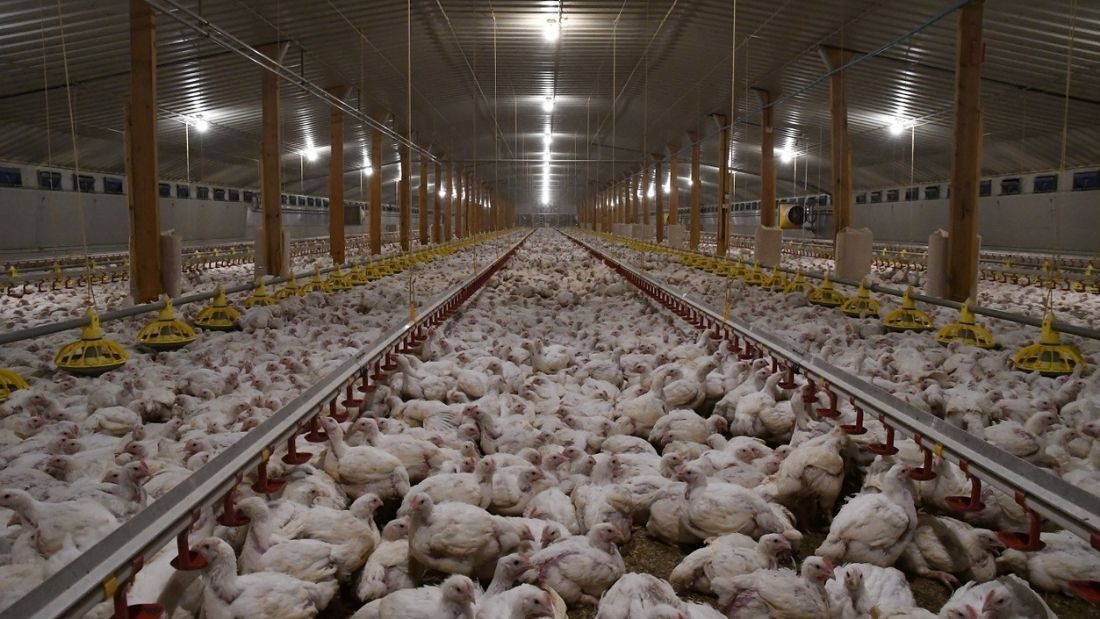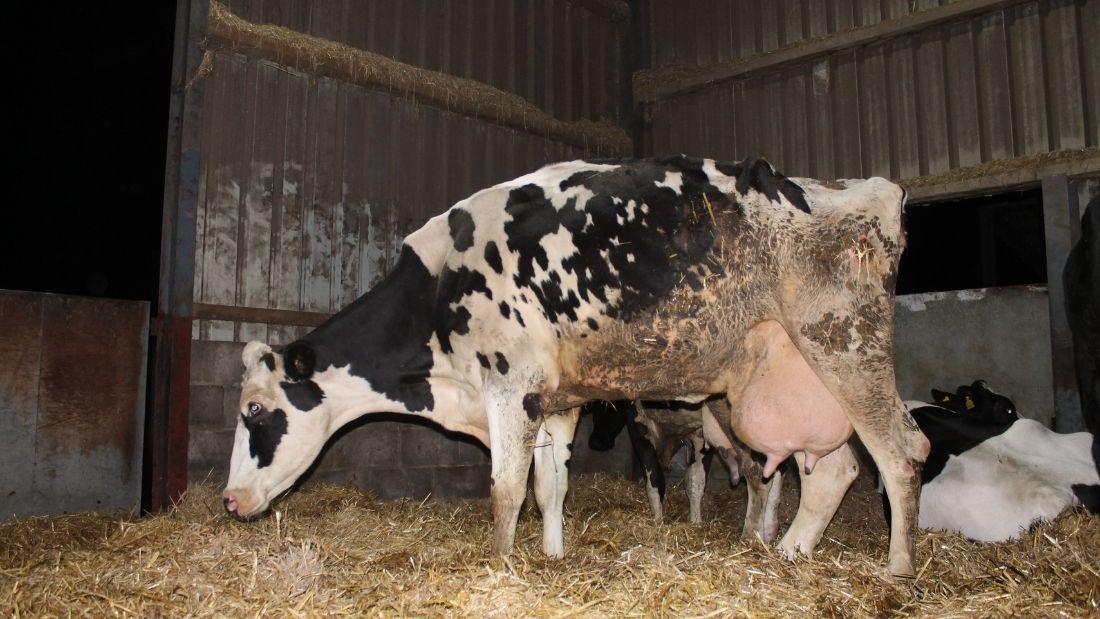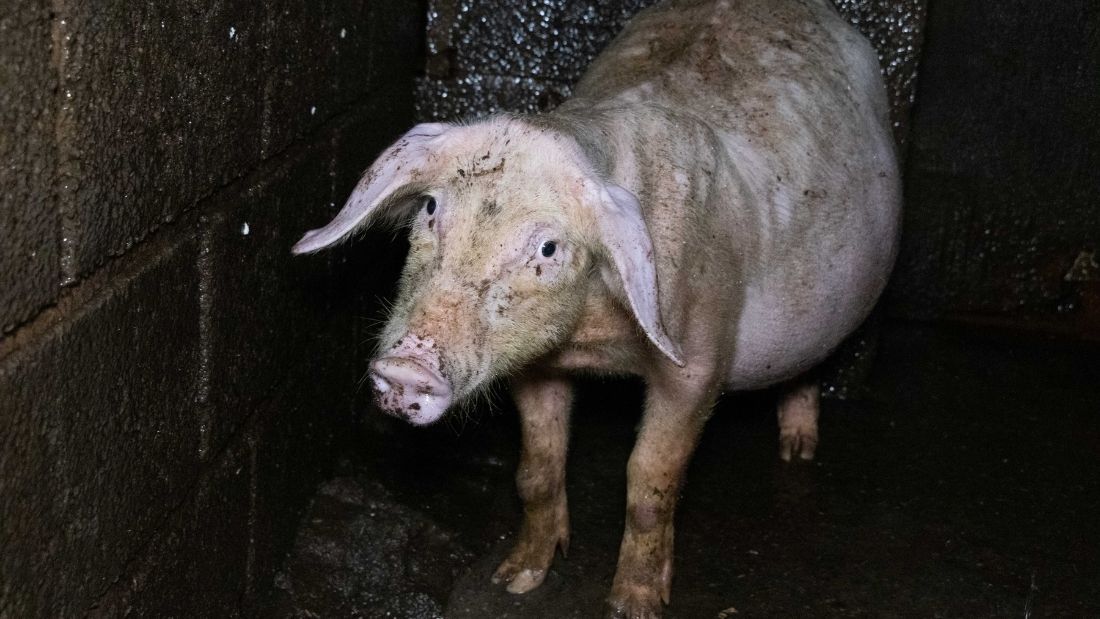Red Tractor Misleads The Public In New TV Advert

In another desperate attempt to mislead the public into buying their products, Red Tractor is hitting prime-time television with a new advert. They hope that 45 million people will see the advert, and that it will grace each of those people’s screens nine times.
The advert claims that all Red Tractor products are ‘farmed with care’, meaning that their ‘standards are met’. Seeing as the advert doesn’t enlighten us on what these standards actually are, we thought we’d give you an insight into what Red Tractor really means for farmed animals.
Red Tractor Allows Mutilations
Routine mutilations are allowed under Red Tractor standards. Pigs and sheep’s tails are cut off without any painkillers which can cause chronic pain. No wonder Red Tractor has been described as ‘barely worth the label it’s printed on’.

Red Tractor Allows Farrowing Crates
Farrowing crates are used to confine mother pigs in crates barely bigger than their own bodies; these mothers can’t even turn around for five weeks at a time, let alone nurture their babies. It is barbaric to think of these intelligent animals kept in such atrocious conditions for so long, during every single pregnancy.
Amazingly, Red Tractor claims such crates are in the pigs’ own interests by insisting that mother pigs would crush their piglets to death if they weren’t caged. But countries like Norway, Sweden and Switzerland have banned farrowing crates for their cruelty, showing it can be done. Farmers could give pigs more space and allow them to build nests, as they do in the wild, but that would cut down on their profits.
Barely Above The Minimum
Under current UK law, 39 kilograms of broiler chickens are allowed for every square metre of space, equating to approximately 20 chickens for every square metre of floor space. Under Red Tractor law, it’s 38 kilograms per square metre, meaning between 17-19 chickens. When creating these standards, it’s almost as if Red Tractor worked out the very least they could do in order to claim their standards are better than the minimum legal standards. 19 chickens per square metre is a far cry from being ‘farmed with care’. It means each chicken has barely more than an A4 sheet of paper in each shed.
It’s no surprise that Red Tractor is quick to point out that they have ‘standards’, but don’t actually ever talk about what those standards are. Imagine an advert where Red Tractor admits it’s ‘standards’ allow for mutilations, mass overcrowding and caging pregnant, birthing and nursing animals. No wonder they boldly proclaim that they have standards – without ever explaining just how minimal these are to the public.

What Health Plan?
The advert then goes on to boast that ‘all cows have a health plan and a personal vet’, as though farmed cows are brimming with good health in this country. It fails to mention that one third of all dairy cows in the UK suffer from mastitis, which is a painful inflammation of the udder, or that in an average herd, 17 per cent of dairy cows suffer from lameness. You have to wonder what these ‘personal vets’ are doing when even DEFRA described the rate of lameness among British dairy cows as ‘unacceptably high’.

Red Tractor’s supposed ‘health plan’ allows for dairy cows to be artificially selected to produce more and more milk; the modern UK dairy cow produces almost 8,000 litres of milk per year. Just 50 years ago, it was less than half that amount. The relentless demand that farmers inflict on cows’ bodies explains why dairy cows are considered ‘spent’ at just five years old and sent to slaughter. You have to wonder how Red Tractor can claim their cows have a ‘health plan’ when dairy cows are exploited to exhaustion and then killed at a fifth of their natural lifespan.
Peace of Mind
The advert finishes off by telling us that we can have ‘peace of mind’ about all Red Tractor products. Viva!’s investigations have repeatedly shown otherwise. We investigated Flat House Farm, a farrow-to-finish pig farm housing up to 8,000 pigs and 800 breeding sows, which was Red Tractor assured.
Investigators found sick and dying animals left to slowly die and rot; other animals were covered in lacerations and grotesque bites, injuries inflicted on them by other pigs who were driven to insanity by the barren environment.
One particularly sick animal, who was severely bloated, had been left in the walkway with no access to food or water – other than the moisture dripping down the walls during a rainy evening. This is in clear breach of UK government guidelines which state:
Drinking water must be continuously available along with feeding facilities which can easily be accessed by all pigs.

This Red Tractor farm couldn’t even meet the bare minimum, right down to refusing sick animals water, let alone follow through with their own ‘certified’ standards.
When Viva! exposed the farm, Red Tractor claimed to be surprised and described themselves as ‘appalled’ at the footage and suspended the farm from their assurance scheme. But why is it down to charities to inspect farms, and how did this farm ever pass a Red Tractor inspection with such blatant disregard for animal welfare?
Red Tractor is always quick to make out that such farms are by far the exception to the norm. But Viva! investigations have frequently found grotesque treatment of animals, from workers killing turkeys with inhumane neck-crushing devices to live cannibalism.
Red Tractor insists that all of their products are farmed with care. But no assurance scheme can ever treat living beings with respect or dignity, given the inherent suffering of the meat and dairy industries. Don’t fall for the marketing pitch. Choose vegan.




